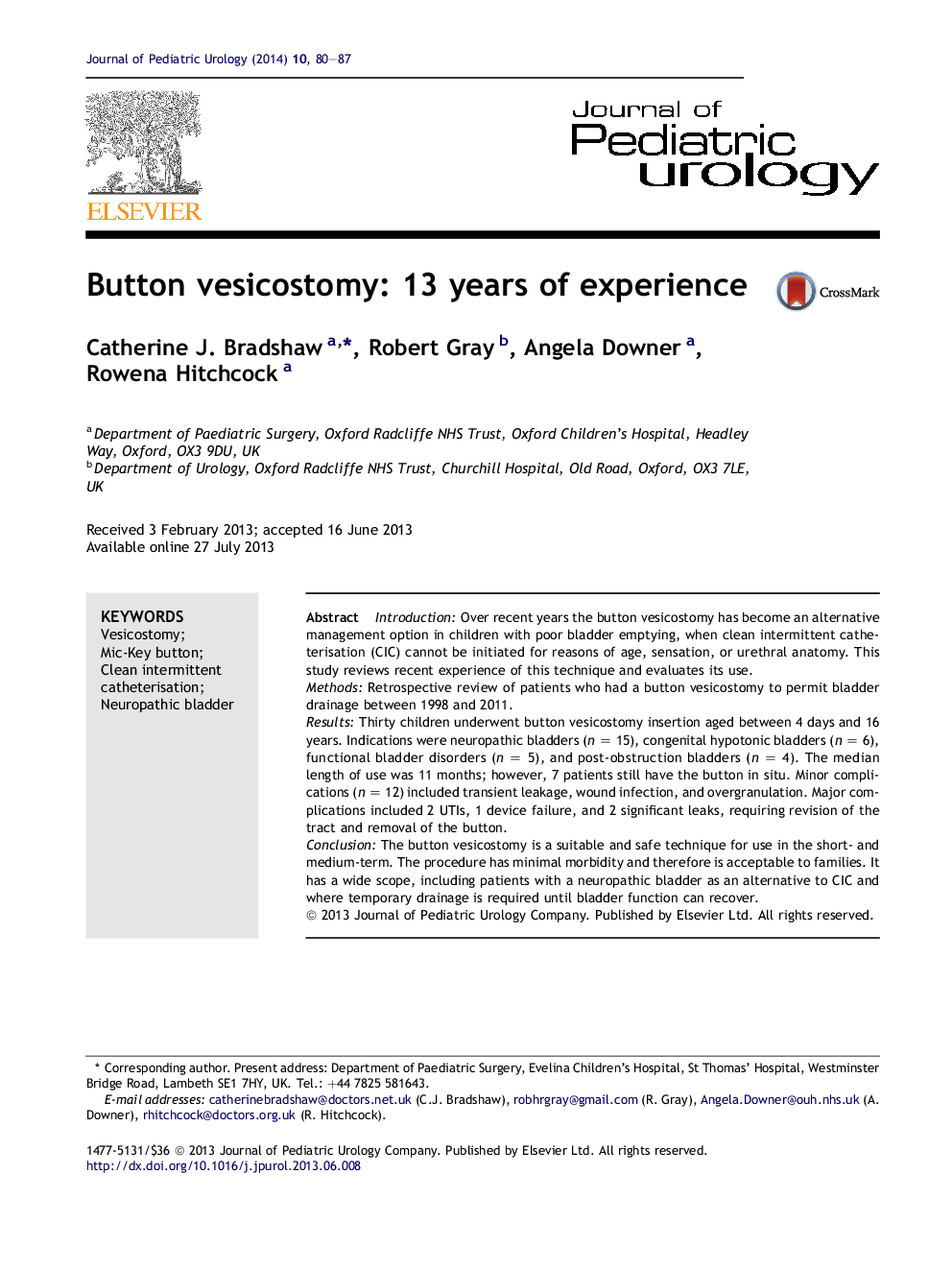| Article ID | Journal | Published Year | Pages | File Type |
|---|---|---|---|---|
| 4162963 | Journal of Pediatric Urology | 2014 | 8 Pages |
IntroductionOver recent years the button vesicostomy has become an alternative management option in children with poor bladder emptying, when clean intermittent catheterisation (CIC) cannot be initiated for reasons of age, sensation, or urethral anatomy. This study reviews recent experience of this technique and evaluates its use.MethodsRetrospective review of patients who had a button vesicostomy to permit bladder drainage between 1998 and 2011.ResultsThirty children underwent button vesicostomy insertion aged between 4 days and 16 years. Indications were neuropathic bladders (n = 15), congenital hypotonic bladders (n = 6), functional bladder disorders (n = 5), and post-obstruction bladders (n = 4). The median length of use was 11 months; however, 7 patients still have the button in situ. Minor complications (n = 12) included transient leakage, wound infection, and overgranulation. Major complications included 2 UTIs, 1 device failure, and 2 significant leaks, requiring revision of the tract and removal of the button.ConclusionThe button vesicostomy is a suitable and safe technique for use in the short- and medium-term. The procedure has minimal morbidity and therefore is acceptable to families. It has a wide scope, including patients with a neuropathic bladder as an alternative to CIC and where temporary drainage is required until bladder function can recover.
